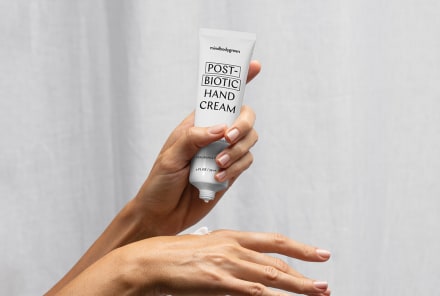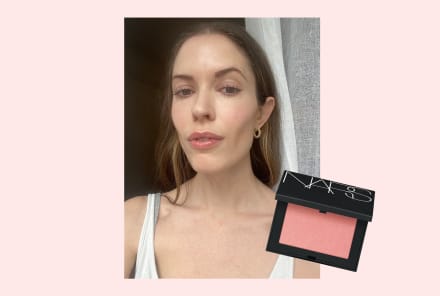Advertisement
11 Wellness Trends To Watch In 2017

Has wellness ever been bigger, broader, or cooler than it was in 2016? From Silicon Valley CEOs to the stars of the silver screen to our grandmas in Milwaukee, innovative approaches to fitness, diet, mindfulness, and the environment have taken root. It's an exciting time to be alive, with so many ways, new and ancient, to improve ourselves. Plant-based food is moving from the side dish to the entree plate. Meditation is taught in Fortune 500 boardrooms. Starched suits have given way to breathable, bendable workout wear. We're refocusing our priorities, individually and as a society, and we're reaching for new tools to help us.
Now 2017 dawns. The new year brings with it fresh approaches to the practices that are defining us. In looking ahead, we've spoken with wellness authorities and our top contributors, we've read the tea leaves and tarot cards, and we've identified 11 trends we're certain will shape the coming months. Get excited for a new year of living well.
Nutrition Gets Personal
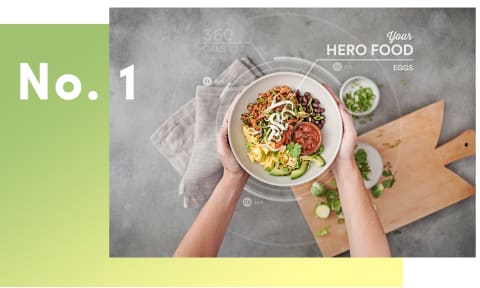
The year 2016 saw one-size-fits-all eating prescriptions take a back seat to individualized nutrition products. In this new year, we expect that trend to continue, with emerging brands taking personalization further than ever. Take a look at Habit, a company that uses clients' DNA to suggest optimized meals. Founder Neil Grimmer spoke at mbg's annual revitalize event about the need for differentiated approaches to diet, asking "Do we all need the exact same food, at the exact same time, in the same way? Intuitively you'd say 'no.' Some of you were out hiking, some of you were meditating. There are all different sizes, shapes, ages in this room." Habit gathers the results of at-home health kit and analyzes 60 biomarkers to craft optimized meal plans, which a team of chefs then whips up and delivers to your door. Their business plan was convincing enough to earn a $32 million investment from Campbell Soups.
DNAFit takes a similar approach, using genetic insights to recommend tailored nutrition and fitness advice. DayTwo is using clients’ intestinal microbiome to better ascertain their needs. Care/of, a vitamin startup, uses a broad-reaching questionnaire to curate users' selections of supplements. "Our mission is to help folks achieve their goals, and those goals are unique, so our packets are, too," says Care/of CEO Craig Elbert. "We have folks looking for healthier hearts or bones, or improved digestion, greater energy, or lessened stress, and we guide them to make decisions based on their values."
Not convinced you need your own bespoke plan? A study published this August adds scientific cred to the trend. It found that "personalized nutrition advice helped people to make bigger and more appropriate changes to their diets than the conventional healthy eating advice which was followed by our control group." That's enough to make us embrace our individuality.
Less Is More: The Age Of Fashion Minimalism
Post Marie Kondo's decluttering bible, The Life-Changing Magic of Tidying Up (which we talked about last year as a wellness trend to watch) and helped introduce the philosophy to the mainstream in 2014, nowadays, minimalism is part of the cultural zeitgeist. The fashion minimalism movement gained massive traction on social this year as a reaction against excessive consumption. What started as a very basic concept (clean lines, few prints, and no excesses), has morphed into a personalized, curated kind of minimalism (themes include sensuality, simplicity, androgyny). The nearly 5 million images tagged #minimalism on Instagram include monochromatic apparel, white sneakers, clouds, and grassy fields. So long as it's stylishly austere, it seems, it's minimalist.
America's tradition of fashion minimalism can be traced back to Calvin Klein's runway launch in 1968, defined by its simplicity and purity, although his was not a clinical minimalism. On the contrary, his designs aimed to reveal or enhance a sense of the body. In the decades that followed with fashion, minimalism started leaving room for personality in a way that garments that were too constructed or too embellished didn't allow. This idea of streamlining your wardrobe and spending less time fussing over an outfit certainly resonates with the modern woman and extends beyond the look—it's about consumers becoming completely aware of the whole process, from design through production, through use, and through the potential to reuse.
The result is that it's the small details that speak the loudest. A growing number of homespun labels are currently at the forefront of the trend, proving that minimalism is anything but boring, and signals that the fashion industry is evolving toward greener practices and products. Many of the latest wave of sustainably minded designers have shifted their focus away from strictly organic materials (which tend to be basic) in favor of a more holistic approach that takes into account the entire life cycle of a piece of clothing, from its carbon footprint to the livelihood of who made it.
Launched this fall, Khaite is a balance of masculine and feminine that encapsulates the capsule wardrobe concept completely. Then there's designer Alnea Farahbella of Toit Volant, who's causing major fashion waves with her USA-made label committed to sustainable sourcing and manufacturing practices. LA-based label Saul shows that minimalism and pattern aren't mutually exclusive—everything is crafted from dead-stock vintage fabrics, giving the clothes a nostalgic feel. For Siizu, sustainability is the driving force behind every decision, and it all begins with the fabric. Dedicated to exclusively using textiles that are 100 percent organic and eco-friendly (even the packaging is completely recyclable), this is an online eco site for no-fuss pieces.
The take-away: There's no time like now to be you. Repeat pieces in creative ways, and only buy new things you can't live without. When we help set the standard, we enact change. Here's to a year of #noregrets.
The Sobriety Movement Will Evolve From Fringe Interest To Pervasive Culture
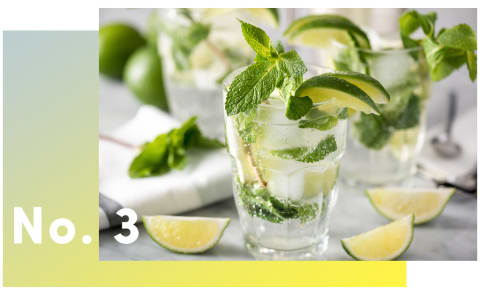
In the past, if someone said they were "sober," it usually meant they were a recovering alcoholic. But over the past few years, a shift has started to occur. We've seen Americans put more focus on health, and the next frontier is our drinking habits.
In the last year especially, helmed by wellness influencers like Light Watkins and Biet Simkin (both mbg class instructors) the sobriety movement has presented itself as one solution for the growing dissatisfaction we have with our lack of real, genuine connection and/or careers that don't challenge and energize us.
Biet, a musician and meditation expert, believes substances actually disconnect us from our true selves, making sobriety not just beneficial but actually a prerequisite to finding and fulfilling our purpose. "Having explored alcohol and drugs in some depth myself, I know that they don't propagate intentional living. When substances get involved, the experience you have tends to get farther and farther from the experience you intended to have." So, what does she say to people who think they need "liquid courage" to be honest—for whom alcohol is a means of facilitating intimacy? "Vulnerability requires authenticity, and authenticity requires vulnerability. Neither of these outcomes is encouraged by the crutch of substances."
We've already seen that spark of insight catch on, as evidenced by the popularity of events like DAYBREAKER (a prework dance party that made mbg's 2015 trend watch) and mindfulness/music/meditation event The Shine (the brainchild of meditation leader Light Watkins).
The popularity of these alcohol-free shindigs is only growing, and in 2017, we'll see even more of a shift toward mindful interactions and refreshing alternatives to booze. Bellwether cities like LA and NYC are already gaining momentum, propelled by trendsetting watering holes and restaurants eager to catch the wave. In New York alone, high-end bar and eatery Gabriel Kreuther has added a selection of nonalcoholic drinks to their cocktail menu, and farm-to-table resto Riverpark is offering Temperance Coolers, inspired by and composed of local, seasonal ingredients—just like everything else on the menu. But this isn't just an East Coast thing.
At the opposite end of the country in San Francisco and Oakland, breweries like Copenhagen-based Mikkeller are beginning to cater to the connoisseur who wants to enjoy the experience of a well-crafted beer without the buzz. Mikkeller's Drink'in The Sun 13 rates at just 0.26 ABV, but features flavors as rich and diverse as lemon, grapefruit, peach, and apricot. At the same alcohol level, Drink'in The Snow gives you a holiday flavor profile complete with clove, coriander, and orange.
This year, we'll see the availability and variety of nonalcoholic options expand even further. Along with that, we can expect our choices to become more intentional and better integrated with our long-term dreams and goals. Founder of alcohol-free movement One Year No Beer, Ruari Fairbairns has experienced this change personally and has seen it in other converts of the program as well: "I'd always dreamed of achieving so much, and part of me suspected the booze was holding me back. Now I can say with absolute authority, 'The booze was holding you back, mate.'"
Wellness Is More Than Yoga & Meditation: It's A Sensory Experience
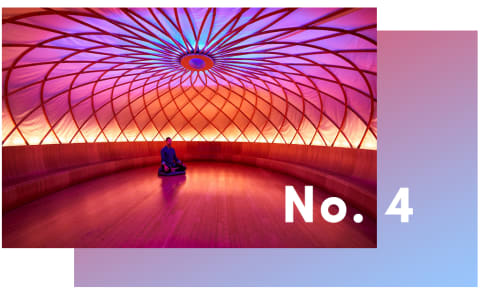
In the past few years, more people than ever have turned to yoga and meditation as a means of improving their lives and coping with anxiety and stress. In late 2016, all-inclusive wellness studios began popping up in the healthy hubs of the world, New York and Los Angeles.
Largely inspired by the immersive experience of Burning Man, multisensory wellness centers aim to help their clients experience a natural high by playing up the senses. One studio of note is the Manhattan-based WOOM, which focuses on delivering yoga-inspired experiences that also utilize sound healing, visualization, scent, and are sealed with an elixir.
"We figured that, similar to a well-balanced diet, if we fed all of our senses with the right nutrients, even if only for short increments every day, we would be able to achieve personal transformation," says Elian Zach, co-founder of WOOM.
Inscape's spacious meditation center is another Manhattan-based studio worth noting. Founded by Khajak Keledjian, the former CEO of Intermix, Inscape uses sound healing, sight, texture, and taste to deliver a 360-experience.
"Meditation shifted—it used to be about spirituality but now people understand its benefits, the science, and how it can empower them to connect to their best selves, to live to their fullest potential, to be present," says Khajak. "Multisensory experiences are immersive. By actively engaging the senses and the mind, we empower people to be fully absorbed in the present moment. That immersion allows for something to enter into a state of 'being' when often we are all in a state of "doing."
In 2017, we expect to see more of this included in yoga studios nationally, and even more studios opening with the intention of appealing to all of the senses.
Ugly Greens Take The Spotlight As Restaurateurs & Brands Take Steps To Fight Food Waste
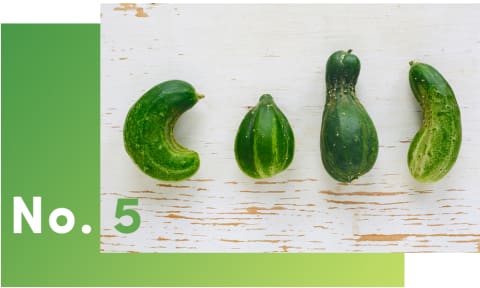
Roughly 40 percent of food in the United States goes to waste. That's over 70 billion pounds wasted per year or nearly 250 pounds per person.
This past year, chefs like Dan Barber started to share these problems with consumers—and attempt solutions. At his New York pop-up and community movement wastED, he strives to create delicious, appetizing food out of the food that typically goes to waste at different parts in the food chain. His menu is a far cry from that of a typical NYC establishment with items like reject carrot mustard, off-grade sweet potatoes, and yesterday's oatmeal available for order. The trend doesn't stop with the food he's serving—even the candles are made from leftover beef tallow.
Ugly Greens, from NYC rooftop grower Gotham Greens, may be slightly less aesthetically appealing than their "pretty" counterparts, but they also sell for $1 less, and bring awareness, via text on their packaging, to the fact that most brands would typically throw the perfectly good product away. "Consumers increasingly care about how and where their food is produced," says CEO Viraj Puri. "As the ugly produce movement has raised awareness of the global impact of food waste, we're seeing a rise in the demand for more integrity and transparency in food production."
Gotham Greens has just begun selling their Ugly Greens at Whole Foods. Last spring, Whole Foods also committed to a full-scale ugly produce program, announced in response to a Change.org petition, being produced in partnership with Imperfect Produce, a delivery service that sends boxes of beat-up beets and not-so-cute carrots straight to consumers' doors. Over on social media, the Ugly Fruit and Veg campaign is working to spread awareness that yes, you can eat that twisted turnip.
In 2017, it'll become more normal to see blemished fruits and vegetables on the shelves of your local stores as consumers become aware of the pervasiveness of food waste.
Mezcal Moves To The Top Of The Cocktail Menu
The wellness set is raising a glass to mezcal. The distinctive, smoky distilled spirit has soared in popularity with sales doubling over the past four years, making its way onto cocktail menus nationwide. This year it's poised for a complete takeover. For the health-conscious, mezcal's traditional, small-batch, rustic origins hold the key to its appeal. Whereas tequila production has largely been outsourced to large-scale factories, mezcal is still made almost exclusively in the Mexican town of Oaxaca, where agave is mashed by hand, roasted in underground pits, and left to ferment in the open air, taking on alluringly idiosyncratic characteristics.
"When I first started noticing mezcal on craft cocktail lists in New York City around 2009 the selection was still severely limited," says Cody Pruitt, beverage director of one of New York City's newest Mezcal bars, Casa Neta Mezcaleri. "But bartenders quickly picked up on it. Now I've seen and used mezcal in riffs on classic cocktails—a mezcal negroni is a beautiful thing, perhaps even better than the original gin-based version—tiki drinks, and even in a new eggnog recipe." Pruitt says it's mezcal's floral notes, minerality, earthiness, and overall "funkiness" that make it such a dynamic component in cocktails. "Our collective palates are getting more and more educated these days," he says.
Emerging brand Gem & Bolt is marketing to (of-age) millennials, selling a mezcal infused with damiana, a Mexican herb traditionally associated with healing properties. Co-founder Elliott Bennett Coon explains their twist on the spirit: "It's a recipe we created closely with our fourth-generation producer and an in-house chemist, meticulously crafting it to honor the true essence and production of mezcal, but we augmented it with this very special plant, damiana. It's a joyful marriage." Coon says drinkers are increasingly interested in the production of their food, craving an understanding of the story behind the product. Chris Reyes of The Black Ant mezcal bar says his patrons go for mezcal because "it's healthier than a lot of spirits out there. It comes from a plant, and plants are in style." We'll drink to that.
Communal Gathering And Women-Only Social Spaces Are The New Wave In Wellness

In the last five years, the feminist movement has seen explosive growth as the dialogue between womanhood and wellness begins to manifest.
Audrey Gelman of The Wing, a space for "women on their way," raised $2.4 million in a short five months this past year. The female founders of super-successful SoulCycle and BBG Ventures, who require at least one female founder, participated in its seed round. The Wing is a members-only gathering space for women who are interested in connecting with other women, want a safe and quiet space to work, or who need a midday touch-up and going home isn't an option. "There is a culture in these co-working spaces that is sort of bro-centric, male-dominated," Gelman says. "There was this blind eye to amenities that were essential for women," Gelman told New York Magazine, on one of the many reasons she founded The Wing.
The idea of women-only clubs isn't new—in fact, they're pretty darn old with earliest known roots in the late 19th and early 20th centuries. In the past they were either reserved for society women or born from pre-existing communities, university sororities, churches, and other locally based networks.
This modern reimagination of women's clubs doesn't require a prerequisite of belonging to a separate community to participate. The only thing you need is a desire to connect. Women are now meeting and supporting one another as a means to well-being, acknowledging that authentic community and connection to others is one of the ways we can care for ourselves. Women's circles are trending because of this open-minded approach toward communal healing, and now women's spaces give those sometimes nomadic communities a home.
While The Wing has gotten the lion's share of press, several other women's societies have cropped up on both coasts in the last year. LA-based doula Paula Mallis' WMN Space is slated to open early 2017 (in response to her women's circle gatherings), Girl Party is a Brooklyn-based community that organizes unconventional gatherings in partnership with New Women Space, and The WW Club opened this year as well.
We expect to see more physical manifestations of, until now, largely online-driven messages of female empowerment in cities across the country. Instagram will continue to be a vehicle for female empowerment messaging, and more women will start mentorships, host circles, and develop new ways to connect as a way to participate in our own and one another's well-being.
The Ketogenic Diet Becomes The Diet Everyone's Talking About
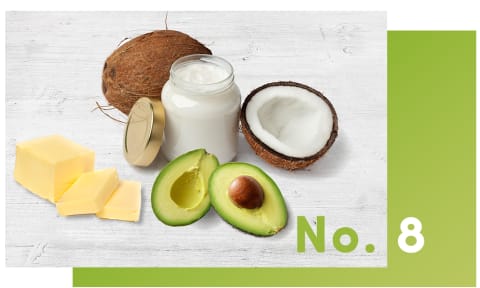
The trendiest diet since paleo, Keto is one of the most-searched wellness trends and dozens of keto Instagram accounts, cookbooks, and podcasts are now starting to emerge. While plant-based diets are still beloved and going strong, people are intrigued by the potential neurological benefits of this high-fat, low-sugar diet that has been used as an effective treatment1 for epilepsy since the 1920s and is now being studied as a therapy option2 for conditions like Alzheimer's and autism.
The main goal of the ketogenic diet is to train your body to rely on fat (instead of glucose) for fuel. When you restrict your intake of carbohydrates you enter a metabolic state called ketosis in which the body produces ketone bodies from fat to use as energy. Ketosis is a totally normal evolutionary adaptation for times when food was not quite as plentiful and available as it is now.
The ketogenic diet has been endorsed by leading integrative medicine doctors like Dr. Mark Hyman, who praises high-fat diets in his book Eat Fat, Get Thin, saying that when you don't get enough fat, you are starving your brain, which is nearly3 60 percent fat. Others, like Dr. David Perlmutter—author of Grain Brain—say that ketones bodies are "profoundly neuroprotective" and can increase levels of brain-protective antioxidants and stimulate the mitochondria, which can affect energy levels. Many keto enthusiasts praise the diet for its anti-inflammatory effects on the GI system and ability to increase energy levels and muscle mass while decreasing hunger pangs and total caloric intake.
The diet is also gaining popularity among athletes, LeBron James as just one example, who embrace this new way of eating to maximize athletic performance. It is also rumored that Kim Kardashian used a version of the diet to lose her baby weight, which has added to its popularity and momentum. The ketogenic diet is only recommended under a doctor's supervision but definitely expresses potential not just for an alternative treatment for neurological diseases but for athletes and anyone looking to nourish their brain. While we definitely expect to see more research on the long-term benefits and effectiveness of the ketogenic diet popping up in 2017, we hope to see plant-based versions of this diet and less extreme ways to reap similar benefits.
See Ya, Acai: Medicinal Mushrooms Are The New Superfood Staple
Mushrooms have long been a staple in the culinary (and psychedelic) community, but this past year, they've burst onto the superfood scene. No longer relegated to stir-fries and stroganoffs, mushrooms are being lauded by functional medicine experts everywhere for their abilities to fight cancer, quell inflammation, balance blood sugar, and more.
"Mushroom extracts are unique because they contain polysaccharides and beta-glucans, compounds that activate the immune system by increasing white blood cell count," says Dr. Mark Stengler, author of The Health Benefits of Medicinal Mushrooms. "They're also one of the few natural sources of vitamin D, with anywhere from 140 to 2,000 IU per 100 grams of mushrooms.”
The healing power of mushrooms is nothing new, though. Used medicinally in Russia, China, and Japan for centuries, mushrooms are at the base of many modern pharmaceuticals, from penicillin to anticancer drugs and the first statin treatments. So if they've been around forever, why here, why now? "The main driver of this 'new' excitement around mushrooms is mostly based on their possible health benefits to many of the biggest modern-day health issues," says Foursigmatic founder Tero Isokauppila. "Mushrooms have shown great promise to be able to protect and detox our bodies from pathogens and toxins that we all unfortunately face every day. Several varieties are also adaptogenic, meaning that they help our bodies to adapt to the various stressors of modern life."
New processes have also made it easier to extract the benefits of mushrooms into easily consumed, therapeutically effective powdered extracts. You'll find some combination of reishi, chaga, cordyceps, lion's mane, himematsutake, turkey tail, and in Erewhon Market's Golden Milk Latte, Cafe Gratitude's longevity and adrenal tonics, and Moon Juice's Vanilla Protein Mushroom Shake (a perpetual favorite around the mbg office). Amanda Chantal Bacon, the woman behind the beloved-by-celebs shop and cookbook, has relied on mushrooms in her own healing journey. "The immune-balancing properties of mushrooms have been a critical part of healing from my auto-immune condition," she says. While she loves their scientifically backed healing properties, she uses them in her shop's products because they "taste good in smoothies and tea or coffee."
Ah yes—what about the flavor? With a relatively neutral, mildly earthy taste, mushroom powders blend best with strong flavors. Here at mbg, we love to make a superfood hot chocolate using chaga, reishi, and cordyceps with a generous dose of raw cacao powder and a healthy sweetener. A mushroom latte is another favorite, simply blending a powder, coffee, and milk of choice until thick and creamy. In 2017, we see mushrooms becoming a staple on cafe menus and the powdered jars taking a prominent place on any superfood-loving foodie's shelf.
Infrared Saunas Are The Trendy New Spa Treatment
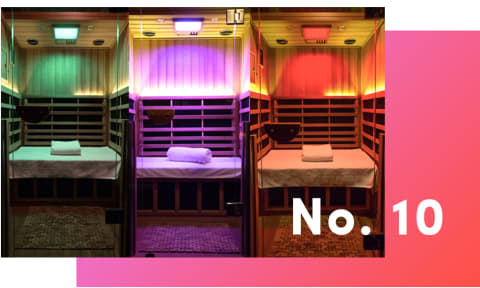
Infrared saunas are a unique new trend that's gaining major popularity in the wellness community. These saunas use a different type of heat wave—the same that hospitals have been using in rehab and to keep premature babies warm—that permeates the body and raises its core temperature. Because of this, infrared saunas are actually cooler than traditional saunas and reach about 120 to 140 degrees Fahrenheit, while traditional saunas can reach nearly 200 degrees Fahrenheit. Because the heating system is different, infrared saunas also provide different health benefits like soothed muscles and joints, more powerful detoxification, and deeper relaxation...and they make you sweat more.
Originating in New York and Los Angeles, 30-minute sauna spa sessions are quickly becoming the trendiest way to detox and reap the benefits of a workout in major American cities. Lauren Berlingeri, cofounder of HigherDOSE, which opened last year in New York City (DOSE stands for Dopamine, Oxytocin, Serotonin, and Endorphins), says her clients love coming in off the busy city street for an instant energy shift, glowing skin, and a more open heart. These saunas are a unique trend because they work for people of all fitness levels and the immediate positive results are what keeps her clients coming back for more, often leaving their first session declaring that they are "totally addicted."
The consensus seems to be that a 30-minute infrared session will have you sweating like you just did hot yoga and is an overall efficient way to detox, ease pain, speed muscle recovery4, and de-stress. Tiffany Jackson, a naturopathic doctor, has two infrared saunas and offers sauna membership options at her wellness center and detox spa in Charleston, South Carolina. She frequently suggests sauna sessions for clients, especially those struggling with Lyme disease and health issues caused by mold5 exposure but says it is a great alternative therapy option for anyone looking to detoxify the body and increase lymphatic flow and circulation.
While infrared saunas have been around for a while—they are starting to pop up in wellness centers, yoga and fitness studios, and spas all over the country. In line with the trend toward individual and personalized wellness, anyone looking for a quick and/or portable fix can buy a sauna blanket that simulates the sauna experience for on-the-go or home use. And with their health benefits backed by some high-profile doctors and endorsed by various celebrities (who buy them for their homes), it's safe to say that infrared heat may be prescribed more to help with medical issues, will become a permanent fixture in healing spaces, and will likely warrant infrared-only studios in 2017.
Affordable, Accessible Wellness Is Starting To Go Mainstream
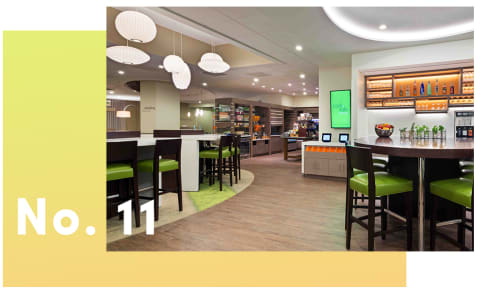
In today's age of organically sourced powders, boutique fitness classes, and exotic wellness retreats, investing in your health can get expensive fast. But that's about to change. As the average person's interest in mind-body wellness continues to climb, industry leaders will keep exploring creative strategies to make healthy living as accessible as it is aspirational.
EVEN Hotels is leading this movement with its affordable, wellness-centric offerings like natural amenities, SPE-certified menu options, comfortable, cooling bedding, and in-room training zones in every guest room. "EVEN Hotels is IHG's newest brand and was created to meet the large and growing demand to help wellness-minded travelers maintain their routines on the road," explains Jason Moskal, vice president of lifestyle brands for the Americas at IHG. "Since wellness means different things to different people, EVEN Hotels was designed to meet a wide variety of needs to enable their ability to stay balanced. The huge success behind the opening of our first six properties, with an additional five hotels in our pipeline, demonstrates the high demand for wellness-focused travel experiences."
We're also noticing established wellness meccas like Whole Foods Market making this shift toward high-vibe living at a lower price point with its new 365 brand that appeals to millennials looking to eat healthy on a budget. With three locations on the West Coast and more set to open across the country in 2017, the store is looking to feed the masses with its affordable in-season produce, loyalty programs, and plenty of sales to drive costs down. "Our 365 Everyday Value brand, which shoppers will find throughout our 365 by Whole Foods Market stores, is designed to offer the highest quality at affordable prices," explains 365 president Jeff Turnas. "We're always looking to offer products with trendsetting ingredients and flavors that are ahead of the curve, whether it's through our packaged store brands or made-to-order meals that we offer in-store." Target is also expanding its budget-friendly healthy options with its Made to Matter campaign that highlights brands that produce natural, organic, sustainable products. In 2016, Made to Matter challenged its partners to focus on five key areas that impact the environment and the day-to-day lives of the store's shoppers. We can't wait to see what innovations it inspires in 2017.
Sweetgreen is another eatery sure to please the busy bee who isn't looking to spend a fortune on healthy food. "We're proud to be changing the way people think about food and health. Whether that's making it easier for a customer to purchase a healthy meal on the go or hosting a run club in the city, we're on a mission to inspire healthier communities," says co-founder Nicolas Jammet. The brand is making veggie-heavy eats trendy, transcending the foodie scene with an apparel and accessory line that infuses buzzworthy pop-culture moments with plant-based puns.
All the while, holistic wellness centers are carrying this trend beyond our plates by offering affordable ways to relax and disconnect. In LA, The Now is catering to stressed-out city-dwellers with walk-in luxury massages at prices starting at $35.
We're willing to bet that large- and small-scale health establishments alike will continue to drive down their prices and gear their marketing toward the everyday consumer this year. From coast to coast, wellness will become less elite and more everyday.

